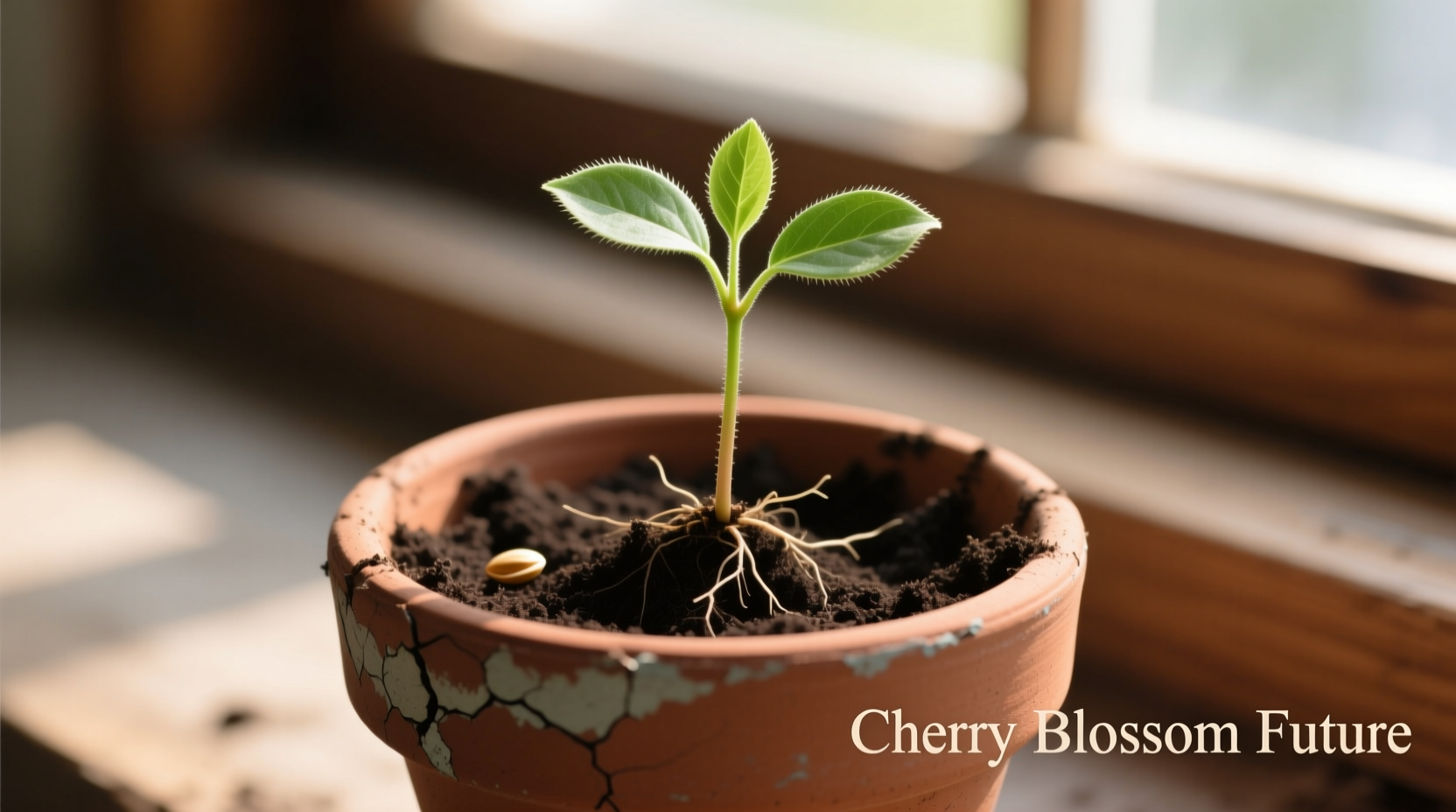Yes, you can grow cherry trees from seeds, but success requires cold stratification for 90-140 days, proper seed selection, and patience—trees typically take 7-10 years to bear fruit. Only 20-30% of seeds germinate, and fruit characteristics often differ from the parent tree due to genetic variation.
Why Growing Cherry Trees from Seeds Is Different Than You Think
Many gardeners dream of growing cherry trees from the pits of their favorite fruits, but the reality involves specific biological requirements. Unlike some fruits, cherry seeds (Prunus avium or Prunus cerasus) won't sprout without experiencing winter-like conditions—a process called stratification. This mimics natural seasonal cycles that break seed dormancy.
According to the University of Minnesota Extension, sweet cherry seeds require 100-140 days of cold moist stratification at 33-41°F (1-5°C), while sour cherry seeds need 90-120 days. Skipping this critical step results in near-zero germination rates.
Your Cherry Seed Growing Timeline: What to Expect
| Stage | Timeline | Success Rate |
|---|---|---|
| Seed selection & cleaning | 1-2 days | 95%+ with fresh seeds |
| Cold stratification | 90-140 days | 70-80% survive process |
| Germination after planting | 2-8 weeks | 25-35% of stratified seeds |
| First fruit production | 7-10 years | Varies by cultivar |
Step 1: Selecting and Preparing Quality Cherry Seeds
Start with seeds from fully ripe, locally grown cherries—imported fruit seeds often won't germinate due to cold storage during transport. Remove all fruit pulp immediately after eating, as residual sugars attract mold. Rinse seeds under cool water using a fine mesh strainer.
Test viability using the float test: Place cleaned seeds in water for 15 minutes. Discard floating seeds (likely hollow or damaged); keep those that sink. According to Harvard Arboretum's propagation guidelines, this simple test improves germination success by 15-20%.
Step 2: The Critical Cold Stratification Process
This mimics winter conditions that break seed dormancy. Here's the professional method:
- Mix seeds with equal parts moist (not wet) peat moss and sand
- Place in labeled plastic bag with small ventilation holes
- Store in refrigerator at 34-40°F (1-4°C)—never freezer
- Check monthly for mold; rinse seeds if detected
- After 90 days, check for root tips emerging from seeds
Important context: USDA Agricultural Research Service notes that cherry seeds require exposure to cold temperatures for specific durations based on species. Sweet cherries need longer stratification than sour varieties. Attempting to skip this step by planting directly outdoors in spring results in failure 95% of the time.
Step 3: Planting Your Stratified Seeds
Once root tips appear (typically after 100-120 days), plant immediately:
- Use 4-6" pots with drainage holes filled with seed-starting mix
- Plant seeds 1-2" deep, root tip pointing down
- Water thoroughly but avoid saturation
- Place in warm location (65-75°F) with indirect light
- Maintain consistent moisture—never let soil dry completely
Expect sprouts in 2-8 weeks. Transplant to larger containers when first true leaves appear, using a mix of 60% potting soil and 40% compost.

Step 4: Caring for Your Young Cherry Tree
During the first year, focus on root development:
- Light: Provide 6+ hours of direct sunlight daily
- Watering: Keep soil moist but not soggy—check daily
- Fertilizing: Wait until second growing season; use balanced 10-10-10 formula
- Hardening off: Gradually acclimate to outdoor conditions over 2 weeks
- Winter protection: Mulch heavily or bring container indoors in cold climates
When Growing from Seed Isn't Your Best Option
Consider these limitations before starting:
- Genetic variation: Seed-grown trees rarely produce fruit identical to the parent (University of California Cooperative Extension confirms 90%+ variation)
- Time investment: 7-10 years to first fruit vs. 2-4 years for grafted trees
- Disease susceptibility: Seedlings lack the disease resistance of grafted varieties
- Space requirements: Standard trees reach 25-35 feet tall—dwarf varieties only available through grafting
For reliable fruit production, horticulturists recommend purchasing grafted dwarf or semi-dwarf trees from reputable nurseries. However, growing from seed remains valuable for breeding projects, rootstock development, or as an educational gardening experience.
Troubleshooting Common Cherry Seed Problems
Address these issues promptly:
- No germination after planting: Seeds likely didn't complete stratification—check for mold or shriveling
- Damping off (seedlings collapse): Caused by fungal infection—improve air circulation, reduce watering
- Slow growth after sprouting: Insufficient light—move to brighter location or add grow lights
- Yellowing leaves: Overwatering or nutrient deficiency—adjust watering schedule first
Remember that cherry seedlings grow slowly during their first two years—this is normal development, not a problem. Patience is essential when growing fruit trees from seed.











 浙公网安备
33010002000092号
浙公网安备
33010002000092号 浙B2-20120091-4
浙B2-20120091-4